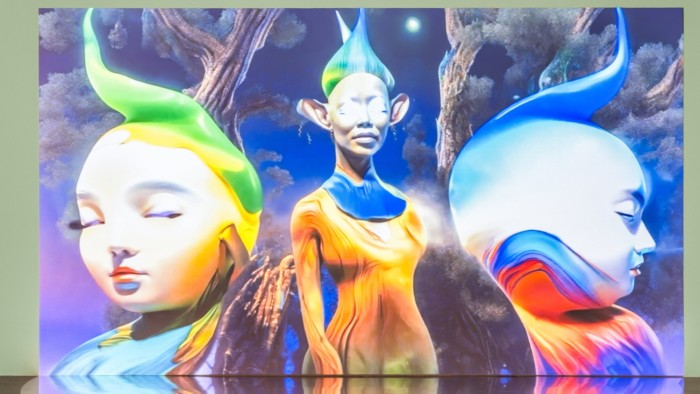Biohacking Artists: Pioneers of a Brighter Future Amidst Uncertainty
In an era marked by rapid change and unpredictability, the concept of biohacking has emerged as a beacon of hope for many. Among those at the forefront of this movement are biohacking artists, a unique blend of creatives who harness the power of science and technology to forge new paths in art and human experience. These pioneers are not just experimenting with their own bodies and minds; they are challenging the very fabric of what it means to be human in a world that often feels chaotic.
Understanding Biohacking: More Than Just a Trend
Biohacking, at its core, refers to the practice of using science and technology to enhance the body and mind. It encompasses a wide range of activities, from dietary changes and fitness regimens to more advanced techniques like genetic modification and neurostimulation. The rise of biohacking has been fueled by a growing desire for self-improvement and a yearning for control over one’s health and well-being.
For artists, biohacking offers a canvas that extends beyond traditional mediums. By exploring biological systems and integrating them with artistic expression, these innovators create works that are not only visually striking but also provoke thought about our future as a species. They challenge societal norms and push the boundaries of creativity.
The Role of Biohacking Artists in Society
Biohacking artists serve as catalysts for change, using their platforms to address pressing issues such as mental health, environmental sustainability, and technological ethics. Their works often spark conversations about the implications of scientific advancements on our daily lives and the future of humanity.
- Mental Health Awareness: Many biohacking artists focus on mental health, using their experiences to highlight the importance of psychological well-being. Through immersive installations and interactive experiences, they engage audiences in discussions about anxiety, depression, and the often-overlooked emotional aspects of biohacking.
- Environmental Sustainability: In a world grappling with climate change, biohacking artists are exploring sustainable practices in their work. They utilize materials sourced from nature, promote recycling, and even collaborate with scientists to create eco-friendly art that reflects the fragility of our planet.
- Technological Ethics: As technology continues to evolve, ethical concerns arise. Biohacking artists often delve into these dilemmas, prompting viewers to consider the consequences of genetic engineering, AI, and other advancements. Their art becomes a mirror, reflecting society’s hopes and fears about the future.
Innovative Techniques Used by Biohacking Artists
What sets biohacking artists apart is their willingness to experiment with unconventional methods. Here are some innovative techniques that they employ:
1. Biological Art
Biological art involves the use of living organisms in creative projects. Artists may cultivate bacteria or other microorganisms to create living sculptures or use plant life to form dynamic installations. This approach not only blurs the line between art and science but also showcases the beauty of life itself.
2. Sensory Experiences
Many biohacking artists design immersive experiences that engage multiple senses. They may incorporate soundscapes, scents, and tactile elements to create an environment that evokes emotional responses from viewers. These installations often encourage participants to reflect on their perceptions of reality and the impact of biohacking on their lives.
3. Self-Experimentation
Some biohacking artists take the concept of self-experimentation to new heights. They may document their journeys through various biohacking practices, sharing their successes and failures with audiences. This transparency fosters a sense of community and encourages others to explore their own potential for transformation.
Case Studies of Influential Biohacking Artists
Several biohacking artists have gained recognition for their innovative approaches and thought-provoking work. Here are a few notable figures:
1. Heather Dewey-Hagborg
Heather Dewey-Hagborg is known for her controversial project, “Stranger Visions,” where she collected DNA samples from objects found in public spaces and used them to create 3D-printed sculptures of what the donors might look like. This work raises profound questions about privacy, identity, and the ethical implications of genetic data.
2. Agnieszka Kurant
Agnieszka Kurant explores the intersection of art, technology, and biology through her projects that involve artificial intelligence and collective intelligence. Her work often examines how technology influences human behavior, encouraging viewers to contemplate the future of human-machine interactions.
3. Oron Catts
Oron Catts is a pioneer in the field of biological art. He co-founded the Semi Living Wills project, which involves growing small living sculptures using tissue engineering techniques. Catts’ work challenges the boundaries of life and art, inviting viewers to reconsider their relationship with nature and the potential of biotechnology.
The Future of Biohacking Art
As the world faces unprecedented challenges, the role of biohacking artists becomes increasingly vital. Their ability to merge creativity with scientific inquiry offers a fresh perspective on the future. Here are some potential developments we might witness in this field:
- Expanded Collaborations: The collaboration between artists and scientists is likely to grow, leading to more interdisciplinary projects that focus on pressing societal issues.
- Increased Accessibility: As biohacking techniques become more accessible, we may see a surge in grassroots biohacking art initiatives, empowering individuals to explore their creativity through science.
- Global Dialogue: Biohacking artists will continue to facilitate conversations about the implications of technology, genetics, and environmental issues, fostering a global dialogue on these critical topics.
Conclusion: Embracing the Future with Hope
In a time when uncertainty looms large, biohacking artists are paving the way for a brighter future. By embracing innovation, exploring the intersection of art and science, and addressing crucial societal issues, these pioneers offer a hopeful vision of what lies ahead. Their work reminds us that creativity and ingenuity can be powerful tools in navigating the complexities of our world.
As we look to the future, let us celebrate the contributions of biohacking artists and support their endeavors. In doing so, we not only honor their creativity but also open ourselves to a world of possibilities—one where art and science unite to inspire and transform.
See more Future Tech Daily

